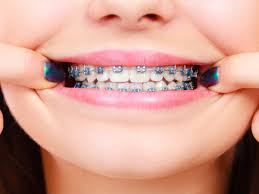Introduction
Orthodontic treatment plays a crucial role in enhancing dental health and achieving a confident smile. However, amidst the journey to straighter teeth and proper alignment, emergencies can arise that require immediate attention. These emergencies, though rare, can be concerning and may affect both the progress of Braces in Dubai and the patient's comfort. Understanding what constitutes an orthodontic emergency, how to manage it promptly, and when to seek professional help is essential for both patients and caregivers.
Identifying Orthodontic Emergencies
Orthodontic emergencies can encompass a range of issues that require urgent intervention to alleviate pain, prevent further damage, or maintain treatment progress. Common emergencies include:
- Pain or Discomfort: Severe pain or discomfort around the teeth, gums, or jaw can indicate issues like broken wires, loose brackets, or shifting appliances.
- Injuries: Trauma to the mouth, whether from sports activities or accidents, can cause damage to braces, wires, or even the teeth themselves.
- Loose or Broken Appliances: When brackets or wires become loose or break, they can disrupt the orthodontic treatment plan and potentially injure soft tissues in the mouth.
- Swelling or Bleeding: Inflammation, swelling, or bleeding around the gums or within the mouth may indicate an infection or another serious issue that needs immediate attention.
- Prolonged Discomfort: Persistent discomfort or irritation that doesn't subside with at-home care may signal an underlying problem that requires professional evaluation.
Managing Orthodontic Emergencies
When faced with an orthodontic emergency, it's crucial to remain calm and take appropriate steps to mitigate discomfort and prevent further complications. Here’s what you can do:
- Assess the Situation: Evaluate the severity of the problem. If there is severe pain, bleeding, or a loose piece that poses a risk of swallowing or causing injury, immediate action is necessary.
- Temporary Solutions: For minor discomfort or irritation, using orthodontic wax to cover protruding wires or brackets can provide temporary relief. Avoid cutting wires yourself, as this can lead to further damage.
- Pain Management: Over-the-counter pain relievers can help manage discomfort until professional help is available.
- Contact Your Orthodontist: Reach out to your orthodontist as soon as possible. Most orthodontic practices have emergency services or instructions for after-hours care.
- Follow Instructions: Follow any advice given by your orthodontist for interim care until you can be seen in the office.
Seeking Professional Help
While some emergencies can be managed temporarily at home, it's essential to seek professional help promptly to ensure the continued effectiveness of your orthodontic treatment and prevent complications. Orthodontists have the expertise and specialized equipment to address a wide range of emergencies effectively. Delaying treatment can prolong discomfort and may interfere with the overall success of your orthodontic journey.
Conclusion
Orthodontic emergencies require swift action and informed decision-making to protect both dental health and treatment outcomes. By understanding the signs of an emergency, knowing how to manage temporary solutions, and promptly contacting your orthodontist, you can navigate these situations with confidence. Remember, early intervention is key to minimizing discomfort, preventing complications, and maintaining the progress of your orthodontic treatment. Always prioritize your oral health and consult with your orthodontist for any concerns or emergencies that arise during your orthodontic journey.





Comments